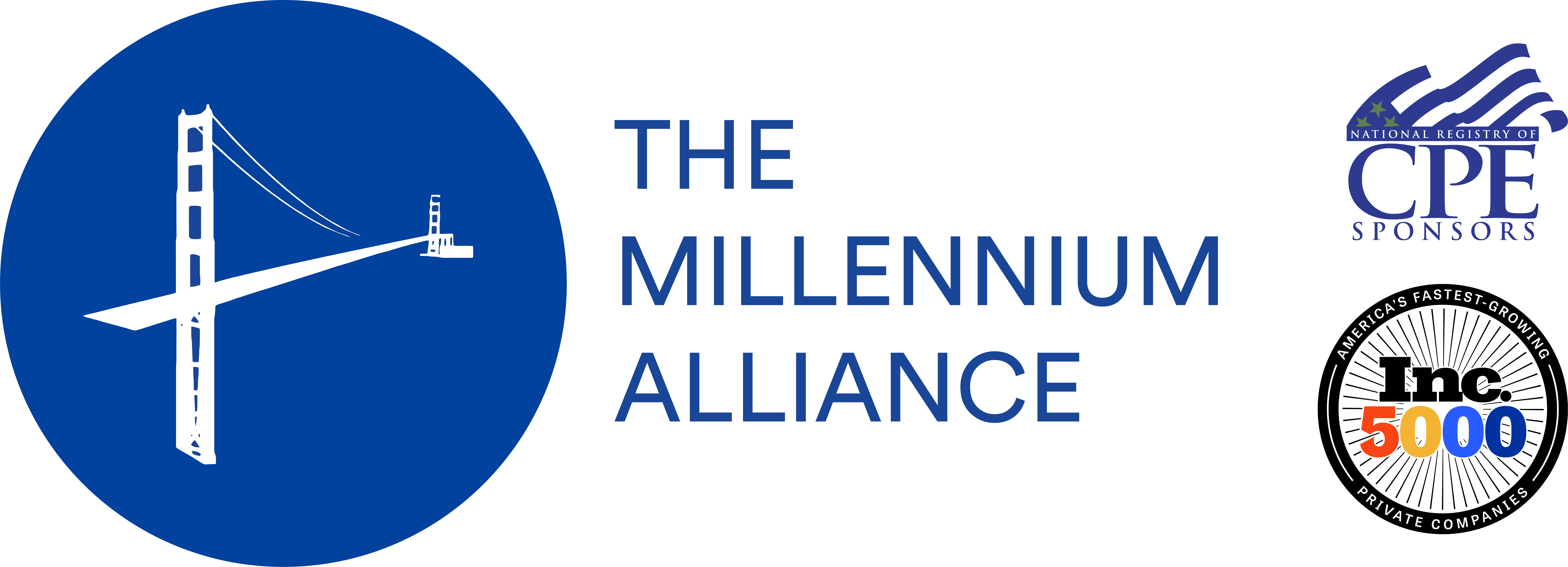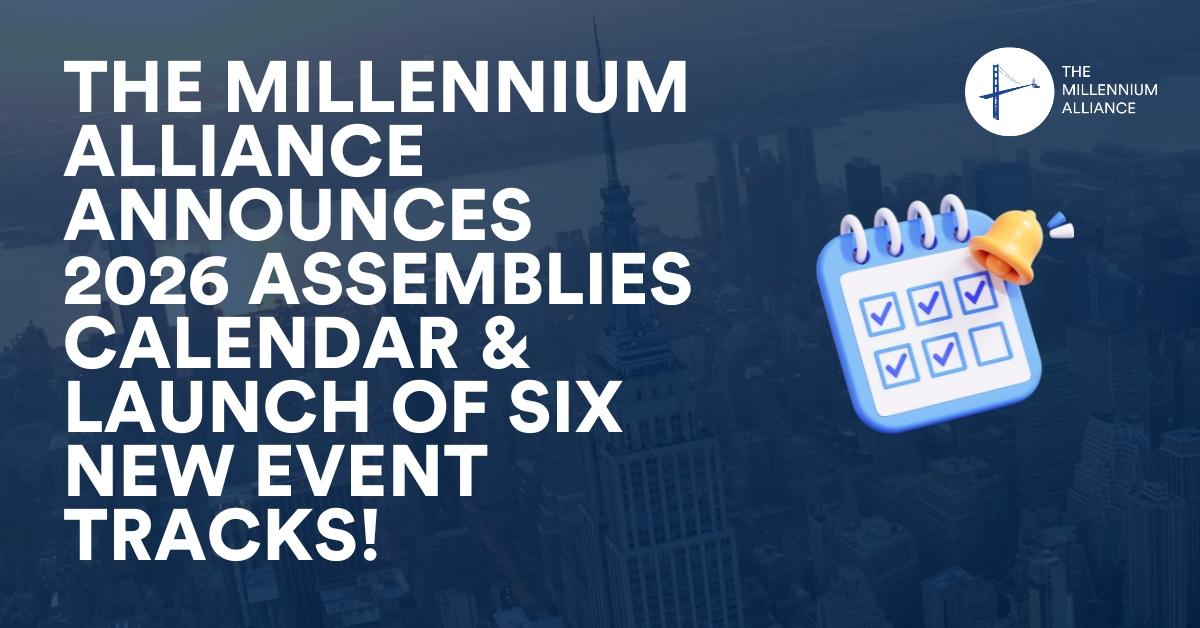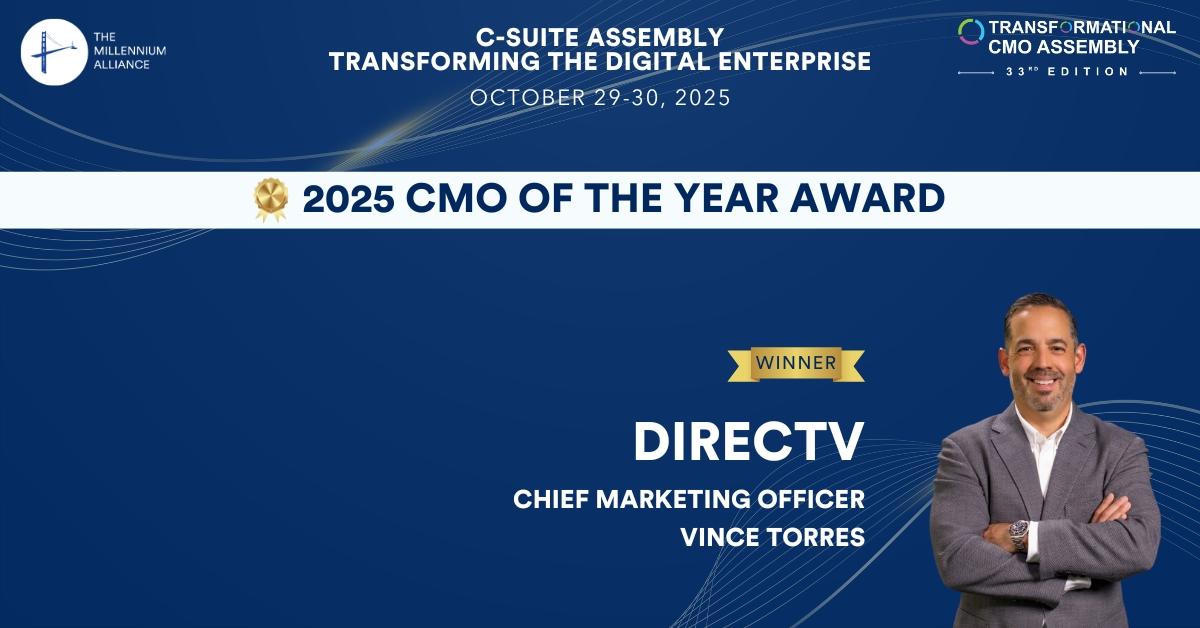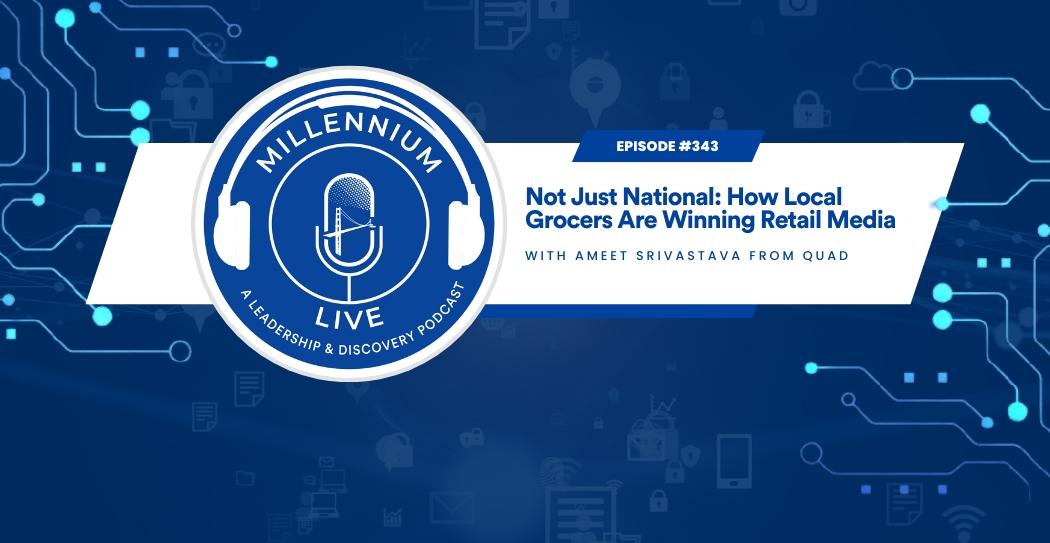As originally published by Denise Lee Yohn on Forbes.com.
2020 certainly wasn’t the year we expected — and 2021 will surely include even more surprises. But certain companies, products, people, and business topics will likely vie for attention this coming year. So this Brand To Watch In 2021 list provides an alphabet-correlated compilation of brands to keep an eye on.
A – Amazon. Not surprisingly Amazon kicks off the list of Brands To Watch In 2021. After a banner year of 37% revenue growth, net income/profit up 200% year-over-year in the third quarter, and shares up 74% this year (despite costs of over $12 billion tied to Covid-19), the sky appears to be the limit for Amazon’s performance. Even Walmart+, the membership program Walmart launched to challenge Amazon Prime, doesn’t seem to be slowing Amazon subscriptions which were up 33% in Q3. 2021 won’t be all good news for Amazon, though. Heightened scrutiny from the public and lawmakers, which arose following protests over warehouse worker safety, is likely to continue; warehouse shutdowns and logistics challenges may recur if the pandemic continues to surge; and investigations and accusations of unfair business practices and antitrust breaches by the U.S. and EU governments seem to be only getting started. Plus Amazon Web Services (AWS), which has been the company’s cash cow in recent years, posted slightly slower growth and faces growing competition (see E for the biggest challenge to AWS.)
B – Black Lives Matter. Lately there have been fewer, smaller public protests against systemic racism than those that broke out last June following several high profile police killings of Black people. But the BLM movement and the push for greater diversity, equity, and inclusion (DEI) for BIPOC (Black, Indigenous and people of color) will remain a hot business topic in 2021. The Business Roundtable, an association of 200+ CEOs from many of America’s largest companies, is pushing for reforms such as increased funding for community lenders and Black- and Latino-owned small businesses and producing and preserving 200,000 affordable housing units. Fortune will be doing its part to keep the issue front and center with plans for its 2021 Fortune 500 list to include self-reported diversity and inclusion data. And certain companies will take meaningful action, including Starbucks which plans to increase diversity within its workforce by tying executive pay to inclusion initiatives.
C – Cannabis. While Covid-19 and the coronavirus might have been an obvious choice for the C slot in this list of Brands To Watch In 2021, cannabis is represented here. (See V for the vaccine, which will be the biggest pandemic news next year.) And even though cannabis is not a brand per se, it serves as an umbrella term for all of the companies, products, and brands in the cannabis/cannabidiol (CBD) market which is expected to top $65 billion by 2027 in the U.S. (from $6 million last year.) The growth is in part due to its legalization in five more states during the 2020 election. Keep watch on specific brands such as Green Thumb (50 locations nationwide) and Canadian company Canopy (set to launch Martha Stewart CBD Wellness Gummies for the holidays).
D – Disney. Disney will continue to experience trials and transformation in 2021. Trials will be in park and resorts, since Disneyland and many of its related properties are not expected to open until after Q1 of 2021. (A side headline to watch is how Disney battles with California state officials over the park closure. CEO Bob Chapek has been one of the few major corporation executives to publicly blast the government over pandemic restrictions since Elon Musk threatened to move Tesla to another state amid a fight over a factory shutdown last spring.) Transformation at Disney will continue, as the company focuses more on Disney+ and its direct-to-consumer business. One casualty may be ESPN, which undergone layoffs and cost-cutting in the wake of the pandemic’s disruption to sports and sports media consumption (see M for more on sports in 2021.)
E — Edge computing. Edge computing — not a brand, but influential enough for Forrester to call it the new black (Forrester actually said it was the “new cloud”) — deserves its entry here. Edge computing, as in “edge” of the network (which locates computation and data storage closer to where it is needed), delivers greater speed and lower cost ideal for applications such as autonomous vehicles and streaming services. It differs from cloud computing (the C brand in the Brands To Watch In 2020 list last year) which involves collecting, processing, and storing data in a centralized, remote location. Providing scalability and data analytics power, cloud players such as Microsoft Azure, AWS, and Google Cloud have dominated the field. But artificial intelligence (AI), internet-connected devices (IoT), and 5G are facilitating the expansion of edge use cases (see F for a take on 5G). So large computing vendors such as Dell, HPE, IBM, and Intel are doubling down on edge; AWS and Microsoft are adding edge offerings; and newer players such as Mutable and Mobiledge are rising.
F — 5G. 2021 is the year 5G (yes, another topic-as-brand) goes mainstream. Most Americans will have access to 5G connectivity some time in 2021, given the race between T-Mobile (Sprint), Verizon, and AT&T to fill out their 5G networks the fastest. And 60% of all phones sold in western Europe and North America in 2021 are expected to support 5G (growing to 85% in 2024. As seen in the early reception of the Apple iPhone 12, 5G actually could reinvigorate the phone market which has seen slowing demand and production and distribution delays. Time will tell if the trend buoys Samsung which struggled with its Galaxy S20 launch earlier this year and has moved up the S21 to debut in January.
G – Google. How will Google fare in the lawsuit by the U.S. Department of Justice and 11 states, which alleges that it engages in anti-competitive practices and creates a monopoly through exclusive business agreements that lock out rivals? (The fight, the largest antitrust case against a tech company in more than 20 years, is only one of many pressures against Big Tech — see Q for others). Will Google continue to be challenged by employee activism, as employees continue to raise concerns about the company’s dealings with U.S. Customs and Border Protection? Will the rebrand of Google’s G Suite software (Gmail, Chat, and Docs) into Google Workspace be effective at creating an integrated experience that better competes with Microsoft Office/Outlook email? These are just a few questions about Google; 2021 will bring answers.
H – Hilton. Given the current state of travel, Hilton, along with the other top-three franchise hoteliers Marriott and IHG, may seem to headed toward a bleak year. But during the latest quarter, Hilton opened 133 new hotels, Marriott returned to profitability, and IHG reported gains in group business such as entertainment and sports. And Airbnb just filed for an IPO at a valuation near $30 billion. So lodging brands may be OK in 2021, but the outlook for airlines remains dismal given all the travel restrictions. Southwest CEO Gary Kelly is planning pay cuts through 2021 and Delta CEO Ed Bastian predicts it will be two to three years before the industry recovers.
I – Impossible Foods. The global meat substitute market size is expected to reach $8.1 billion by 2026. Although that’s a fraction of the global beef market (estimated at $395 billion by then), meat alternatives are gaining in popularity. Case in point: Beyond Meat’s annual sales increased by nearly 10 times between 2017-2019 and is now in 26,000 retail outlets nationwide. Impossible, whose growth has also been skyrocketing, is the pick for the brand to watch, though, because it recently announced it is developing dairy-free milk and plant-based fish and steak products. Bigger brands to watch in the meatless market include McDonald’s, which has a plant-based burger, McPlant, in development and plans to test it in some global markets in 2021; Tyson Foods, which is currently testing an “unchicken sandwich” at some Jack In the Box restaurants; and Kellogg’s MorningStar Farms, which recently rolled out “Incogmeato,” its first offering specifically designed to mimic meat.
J – Joe, as in Joe Biden. Don’t worry – this Brands To Watch In 2021 list isn’t getting political. It’s simply stating that the U.S. president-elect will have an outsized influence on business next year as he takes office. Business news will likely center on the economic recovery, one of four priorities Biden has named for the start of his administration. Attention to his other business-related priorities such as tax reform, healthcare, and infrastructure depend on which party controls the Senate after the January 5th runoff for Georgia’s two Senate seats. But Biden’s personal brand – with its sharp contrasts to Donald Trump’s personal brand — will surely also be in the spotlight.
Speaking of Trump, the Trump brand clearly won’t be fading from business headlines anytime soon. Look for Trump to re-engage in the Trump Organization as it does licensing and new property deals to raise money for the travel and leisure industry businesses which were badly affected by the coronavirus pandemic. Or look for Trump to launch his own Trump-branded media network, as he seems poised to do. Or look for the groundwork for a presidential run for himself or one of his children in 2024. Or all of the above – and/or something entirely different. Also this Brands To Watch list would not be complete without including mention of Vice President-elect Kamala Harris and the news she will generate — not only as the first female, first Black, and first Asian American Vice President; but also one who is seen by some as a friend of tech and by others as a foe of big banks.
K – Kroger. Grocery stores including Kroger will likely remain the bellwether of the retail industry, as the shopping behaviors customers adopted during the pandemic persist. The share of retail business from e-commerce (approximately 16%) will continue to grow; as will retailers’ revenue from selling digital ads, selling customer and sales data, and running third-party marketplaces. Kroger is now the 10th biggest retailer by ecommerce sales at $11.3 billion, according to eMarketer; and Albertsons revenue from digital initiatives grew 243% this year. Sustained or even increased demand in curbside pickup and delivery will drive continued success for distribution services such as Instacart, whose order volumes surged 500% this year and are fueling a pending IPO at around $30 billion valuation (see R for more IPO news). And new channels such as social commerce (Facebook Shops and Instagram Checkout) and shoppable video (YouTube Looks) will continue to rise. All this means a very different brick-and-mortar landscape next year. Coresight predicts as many as 25,000 store closures this year and retail real estate is being repurposed (e.g., mall operator Simon Property Group is reportedly in talks with Amazon to convert department stores into e-commerce fulfillment centers.)
L — Lyft. With delivery projected to grow to 23% of share of restaurant sales by 2025 (from pre-Covid-19 forecasts of 15%), it’s no wonder that Lyft is working on a new service to take a slice of the market. The company is taking a B2B logistics approach in working with retailers and restaurateurs and undercutting prices charged to businesses by other services such as GrubHub. 2021 will also bring other restaurant developments, given the pending Door Dash IPO (valued at $16 billion in last private valuation), new digital- or pick-up-only stores from brands including Chipotle and Starbucks, and innovations like the virtual-only concepts such as Tyga Bites. Lyft will also stay in the headlines as it, along with Uber, DoorDash, and other gig economy employers, continues fighting the battle against classifying workers as employees (despite having collectively spent over $200 million to win approval of a ballot measure that exempts them from AB5, California’s gig-work law.) And Lyft has the challenge of reversing the drop in ridership and revenue amidst the lingering pandemic.
M – Major League Baseball. MLB is one of several national sports organizations that need to keep their players safe, get fans back into their venues, and play regular bubble-free, on-schedule seasons in 2021. But the MLB seems the most at risk, with teams having suffered a combined $3 billion in operating losses this year and the league and owners unlikely to easily resolve disputes with the players union over money and new game rules. The NFL faces multiple challenges for Super Bowl LV: a potential postponement if positive Covid-19 cases among players causes more game reshuffling; advertisers hesitant to cough up $5.5 million for a 30-second spot in a recession; a half-time performance by the not-yet-mainstream artist The Weekend; and attendance at the event capped at 20%. College, high school, and even little league sports are also in flux. But there are some bright spots. Right now it’s full steam ahead for the Olympics in Tokyo this summer (including spectators) and the Daytona 500 in February (perhaps without them).
N – Netflix. Will Netflix remain the most popular streaming service? It certainly has stiff competition. According to Kantar’s Entertainment On-Demand panel, Amazon enjoyed the highest Q2 growth in new subscriptions of all streaming video on demand (SVOD) platforms. Although Disney+ share fell significantly after a period of rapid expansion, the company’s creative talent and corporate heft (covered in D above) will keep the pressure on. Apple TV+ will continue its free-trial with hardware offer and HBO Max will leverage its robust content catalog. (In a related development, the restructuring around HBO Max at AT&T’s WarnerMedia puts the fate of CNN in question. Some believe it may be headed for a spinoff.) The streaming wars are also implicated in the future of movie theatres and movie studios, which is, at best, uncertain, given the lackluster results of the theatre debut of Tenet and the unreported results of the combined premium video on demand (PVOD)/Disney+ release of Mulan. Wonder Woman to the rescue?
O – Online. The Brands To Watch In 2021 list cheats again with another non-brand entry, but it seems appropriate given that it seems everything is online now. E-commerce was already covered in K, so here the focus is on online education, including distance learning and EdTech. Online learning is here to stay. Many schools’ and universities’ plans to return to online-only courses next spring after opening this fall will further strain the financial health and technology capabilities of educational institutions, as well as the parents and teachers struggling to maintain the quality of student learning and quality of life. Watch for more solutions like communications platform Campuswire and corporate training providers including Udacity.
The move to online healthcare — including telemedicine, connected health/care, and technology-enabled care (TEC) — comes with similar opportunities and challenges. Frost & Sullivan predicts seven-fold growth by 2025 in demand for telehealth in the U.S., over the 64.3% increase already seen this past year. Brands — such as Amazon Pharmacy (offering delivery prescriptions directly to customers), tech-driven insurance company Oscar Health (heading toward an IPO), and virtual doctors’ visit platform Amwell (developing a partnership with Google Cloud) – will provide new options for customers. But concerns over equitable access, social determinants, and worker safety will continue to rise in education and health. And the move to more outpatient/home care and the rise of health retailers will also affect healthcare businesses in 2021.
P – Privacy. Privacy is the yang to online’s yin – they are two forces that seem to oppose but actually can and should complement each other. Privacy isn’t a brand but it will have a big impact on them next year. Privacy concerns and regulatory and legal activity will increase since the newly created California Privacy Rights Act (CPRA) expands further the state’s landmark consumer privacy law, the California Consumer Privacy Act (CCPA), and is likely to be widely observed across the U.S. What’s more, Apple now requires all third-party developers to detail their app’s privacy information — and will deprecate from its devices the Identifier for Advertisers (IDFA) early next year, which means advertisers will no longer be able to identify, tailor messaging, and measure user-level behavior within iOS apps. As a result, brands will rely less on third-party and passively-collected customer data and pursue more “zero-party data,” which customers intentionally and proactively share with them. If done well, brands can use this trend to build trust and greater connection with customers – but that’s a big if.
Q – QAnon. Whether or not you believe in QAnon, it will impact business in 2021. The theory, which primarily clams that a cabal of Satan-worshiping pedophiles are plotting against Donald Trump while operating a global child sex-trafficking ring, is no longer a fringe political movement. Some popular QAnon Facebook groups have hundreds of thousands of members and QAnon supporter Marjorie Taylor Greene won a congressional seat in Georgia. That QAnon has been able to establish itself involves the broader issue of content moderation and disinformation on social media. 2021 is likely to bring news for Facebook, Twitter, YouTube, and others amidst debates over Section 230 of the 1996 Communications Decency Act which protects social media companies from liability for content posted by their users and allows them discretion in moderating offensive posts. Big Tech will also be challenged by the push for antitrust regulation (as previously noted about Google in G), the potential reinstatement of Obama-era net neutrality rules, and calls for company breakups.
R – Robinhood. Robinhood, the commission-free investing and trading app that attracted a flood of new retail investors during the coronavirus outbreak and is expected to go public in 2021, represents one of several threats to banks and other financial institutions. For one, younger investors are being drawn away from traditional retail investing brands like Charles Schwab and E*TRADE by fun mobile phone apps including Robinhood. Also more tech companies are developing embedded finance, incorporating financial services into their offerings (e.g., Uber embeds payments into its app). Add to that the rise of companies bypassing the costly, potentially time-consuming, and challenging IPO process and taking alternate routes to going public (e.g., Palantir went with a direct listing and Unity chose a variation on the Dutch auction process.) SPACS, special purpose acquisition companies formed for the express purpose of acquiring other companies (aka “blank-check listings”), are another option growing in popularity. All this means the finance world will look very different next year.
S – Supreme Court of the United States. The new conservative justice Amy Coney Barrett may make 2021 a newsy year for the federal judiciary. In addition to hearing cases on controversial social issues including abortion rights and policies at the U.S.-Mexico border, the justices will hear business cases related to the Affordable Care Act (ACA), labor rights, limits on unauthorized employee access to work computers, and more. Also, the “brand” of the Supreme Court itself may make the headlines, given recent discussions about expanding the number of justices and exploring term limits for them.
T – TikTok. The U.S. almost lost one of the most influential social media platforms this year after President Trump threatened to shut down TikTok over perceptions that it posed a national security risk because it is owned by ByteDance, a $100+ billion Chinese corporation. Already one of the most popular apps in the world (with almost two billion downloads worldwide and more than 100 million U.S. users), TikTok will likely grow further in 2021 with backing from Oracle and Walmart and the increasing sophistication of influencer marketing.
While the broader anti-China narrative that has characterized the Trump administration might become less edgy after Biden takes office, efforts to temper China’s continued push to become a technological superpower will remain. That probably won’t slow down Chinese e-commerce giants Alibaba and JD.com, which together racked up around $115 billion U.S. in sales during the 2020 Singles Day shopping event (dwarfing the $10.4 billion estimated to have been generated by Amazon Prime Day and surpassing the total of all online sales in the U.S. last year on Thanksgiving and Cyber Monday.) Tencent, another Chinese conglomerate to keep an eye on, is also growing, enjoying increases in usage and paid subscriptions. The biggest threat to these Chinese companies will be the Chinese government, which flexed its muscles by pulling the plug on the Ant Group’s IPO after its co-founder Jack Ma criticized the country’s financial watchdogs and banks, and continues to pursue regulations designed to root out monopolistic practices in the internet industry.
U – United States Postal Service (USPS). Delayed ballots during the recent election are only the latest challenge the USPS has to contend with. The sharp increase in delayed mail that resulted from operational changes instituted earlier this year by the new postmaster general Louis DeJoy, the strain of increased package volume during the pandemic, and the agency’s poor financials (operating at an annual loss since 2007) suggest that the USPS is headed toward privatization. Advocates say that makes sense in light of competition, particularly from Amazon which now ships 67% of its own packages directly to customers (up from 50% last year) and is rapidly expanding its distribution capabilities (K above includes mention of this).
V – Vaccine. The last non-brand entry in this list of Brands To Watch In 2021 belongs to a topic that will no doubt have tremendous impact on everything including business – the coronavirus vaccine. At the time of this writing, the vaccines from Pfizer and its partner BioNTech, Moderna in partnership with the National Institute of Allergy and Infectious Diseases, and perhaps AstraZeneca and Oxford University look to be the most promising now, but a host of other companies have ones in development as well. The timing of the delivery and rollout of the vaccine remain unknowns. Known is that distribution challenges (given the shipping and storage requirements of the vaccines), ethical questions (about which countries, states, populations, etc. should get it first), and public ambivalence toward vaccine acceptance threaten the prospect that the Covid-19 pandemic will end as quickly as is needed to stem the economic decline.
W – Watch, as in Apple Watch. The Apple Watch seems to be Apple’s most potent driver for 2021, given iPhone growth has been slowing, no major changes seem to be planned for iPhones next year, and the boom in iPad and Mac sales that corresponded with the increase in work- and learn-from-home will moderate. Apple Watch is part of Apple Fitness+ which is becoming a powerful, sophisticated health and fitness platform that incorporates metrics (e.g., the new Blood Oxygen Saturation app complication) that users can visualize on Apple devices. More wellness and mental health applications are sure to come now that the FDA has cleared of an app that helps people suffering from nightmares or post-traumatic stress disorder (PTSD) get a better night’s sleep. Perhaps the only other aspect of Apple that should be closely watched is Apple One, which bundles a bunch of Apple services into a single subscription, a la Amazon Prime. Apple Music has been a huge success, but News+ seems to be struggling and sustained demand for TV+ remains uncertain.
X – XRB. XRB (recently rebranded as Nano) and Rainbow XRB (a crypto wallet service) may be lesser known cryptocurrency/blockchain entities, but they signify how the space is burgeoning. In fact, J.P. Morgan has touted Bitcoin’s emergence as an alternative to gold for young people and suggested that the price of the cryptocurrency could double or triple if current trends continue. And they certainly look to be: PayPal has begun offering cryptocurrencies such as Ethereum and Bitcoin to customers; Square added $50 million worth of Bitcoin to its balance sheet as a long-term investment; and investor software platform MicroStrategy made a $250 million Bitcoin purchase in August and is looking to buy more. Cryptocurrency may be the hottest sector of fintech but it’s not the only one that will continue to grow in 2021. Peer-to-peer (P2P) payment and financial services from Venmo to Lending Club are on the rise, as is embedded finance (as discussed in R above) and banking-as-a-service developments such as Green Dot.
Y – Yandex. You might not yet have heard of Yandex, the Russian multinational corporation known primarily for search, but you will thanks to the self-driving car it is testing in Ann Arbor, Michigan – or perhaps because of MLU BV, its JV with Uber that is being spun off – or maybe due to its deal with Hyundai to develop software and hardware for autonomous car systems. It deserves attention as do many other more well-known autonomous vehicle companies including Waymo, Uber, and Tesla – and other newer developments — such as Walmart which has launched a pilot in Scottsdale, Arizona, with self-driving car company Cruise to operate an entire fleet of all-electric delivery vehicles; Honda which has announced it is on pace to be the first to mass produce sensor-packed level three autonomous cars; and tech developers such as LiDAR maker Sense Photonics and AI players Plus.ai and Helm.ai — that are accelerating the timeline for broader adoption of autonomous vehicles.
Z – Zoom. Of course, Zoom had to be on this Brands To Watch In 2021 list, given its astounding rise this past year. Will Zoom sustain its triple-digit revenue gains (355% in Q2), soaring stock (up 500%+ in 2020) and latest valuation ($107 billion)? Not if Microsoft has its way. Microsoft Teams has enjoyed its own growth spurt (115+ million daily active users today vs. less than 20 million a year ago) and is building lots of cool features such as Together Mode in addition to integrating with Microsoft’s 365 apps. Of course, Zoom is fighting back with updates including Zapps (a suite of apps integrated into Zoom) and end-to-end encryption (E2EE). (Related news is the potential Salesforce acquisition of Slack, which would increase Slack’s scale and Salesforce’s strength vs. Microsoft.) The future of Zoom is more than a tech platform question, though. It’s about the future of work and the impacts of increased remote work on data security and technology, organizational culture and employee engagement, and hiring and workforce development — as well as far-reaching developments in transportation, the environment, and the future of cities themselves.
***
This list is intended to provide an extended perspective on the business landscape in 2021, but it certainly doesn’t include every brand, company, person, or business topic worth looking out for next year. Please share the other brands you’ll be watching on Twitter, LinkedIn, or http://deniseleeyohn.com. And revisit brands from past years.














